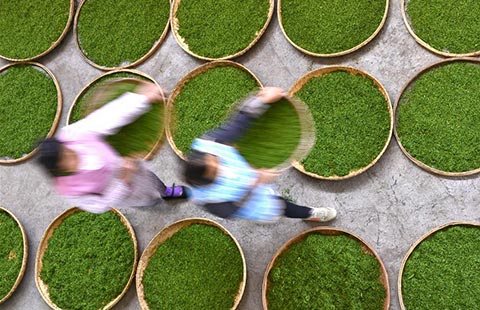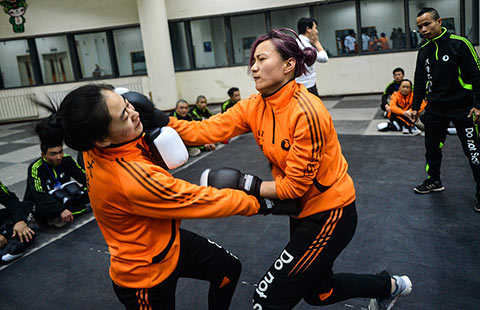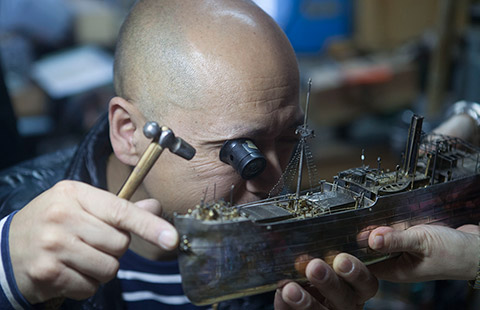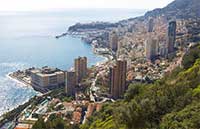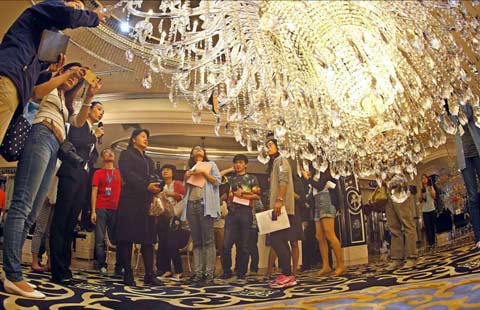Panjin claws its way upward
By Zhu Chengpei and Liu Ce in Panjin, Liaoning (China Daily) Updated: 2012-10-15 09:48Technical support
Panjin's history of raising crabs dates back to the 1970s. In 1991, local people began to cultivate the crustacean in paddy fields. After years of trial and error, the local government helped crab farmers in Panshan county to overcome many technical problems so that farming crabs in paddy fields became popular on a large scale.
Moreover, cooperation with Shanghai Ocean University in Panjin led to the establishment of a new technology research center in 2011 to improve the output and quality of crabs.
The difference between paddy fields here and in other parts of the country is that those in Panshan county are surrounded by half a meter of plastic sheeting. From afar, the fields look like wide and narrow stripes. On the sides of the field the farmers plant soybean.
"A traditional rice row pitch is nine cun (about 30 centimeters). For the crabs, we changed it to six cun and three cun. As a result, we can guarantee the output of rice because the amount is unchanged but this method allows space for raising crabs," said Chen Weixin, head of Panshan Crab Technical Institute.
"This model allows paddies sufficient sunlight which can reduce insect damage, so we don't need to use pesticides. Also, crabs can clear weeds and their waste can improve soil fertility," she added.
"I can harvest rice, crabs and soybeans at the same time. The total profit amounts to 2,200 yuan for every one-fifteenth of a hectare, 800 yuan more than if I planted just rice. Moreover, the rice sells at a higher price than ordinary rice because it is grown without pesticides," Bai said.
Wang Wu summarized the so-called Panshan model as "1+1=5", namely, "Rice plus crab equals output increase plus food safety plus ecological security plus increase in farmers' income plus business efficiency."
In addition, due to its advantages, the Panshan model has been exported to more than 20 provinces and regions including Ningxia Hui autonomous region and Heilongjiang. The whole area is more than 87,000 hectares.
Brand building
"More and more customers like to choose Panjin crab now. In Hujia market, more than 100,000 people from all over the country come here to buy crabs every year. This is the brand effect," said Yan from the Panshan county crab industry association.
In 2011, the Panjin government registered all local crabs under the trademark "Panjin Crab".
"People like to buy Panjin crabs for their good taste and quality although it will be 10 yuan more expensive than other local brands," said Jia Yunsheng, a crab broker who has been in the business for 11 years in Hujia.
Most crabs are not sold in the market but by crab brokers such as Jia.
There are more than 6,000 crab brokers in Hujia township now. They travel around the country or even abroad to sell Panjin crabs.
"My customers will call me to order crabs and then I buy the crustacean from local raisers and send them to my customers by air, train or bus," Jia said.
"That's the traditional way of selling crabs. We are building an online marketing platform. It may be put into use in the near future," Han said.
Panjin crabs, especially larval crabs, are highly favored in Japan and Korea. Southeast Asia is becoming Panjin crab's latest market. In 2011, Panjin crab exports amounted to 2,000 tons.
Contact the writers at zhuchengpei@chinadaily.com.cn and liuce@chinadaily.com.cn.
- Successful overseas operations of merger, acquisition by Chinese firms
- Chinese police prohibit 5,452 fraudulent bank transfers
- Online shopping in rural China nearly doubles in 2015
- China's e-pharmacy eyes prescription drug for full-bloom growth
- Pimax launches 4K VR device in Beijing
- The making of Chinese tea
- Myanmar's rice export to China expected to rise after water festival
- Construction on China-Nepal border market begins

